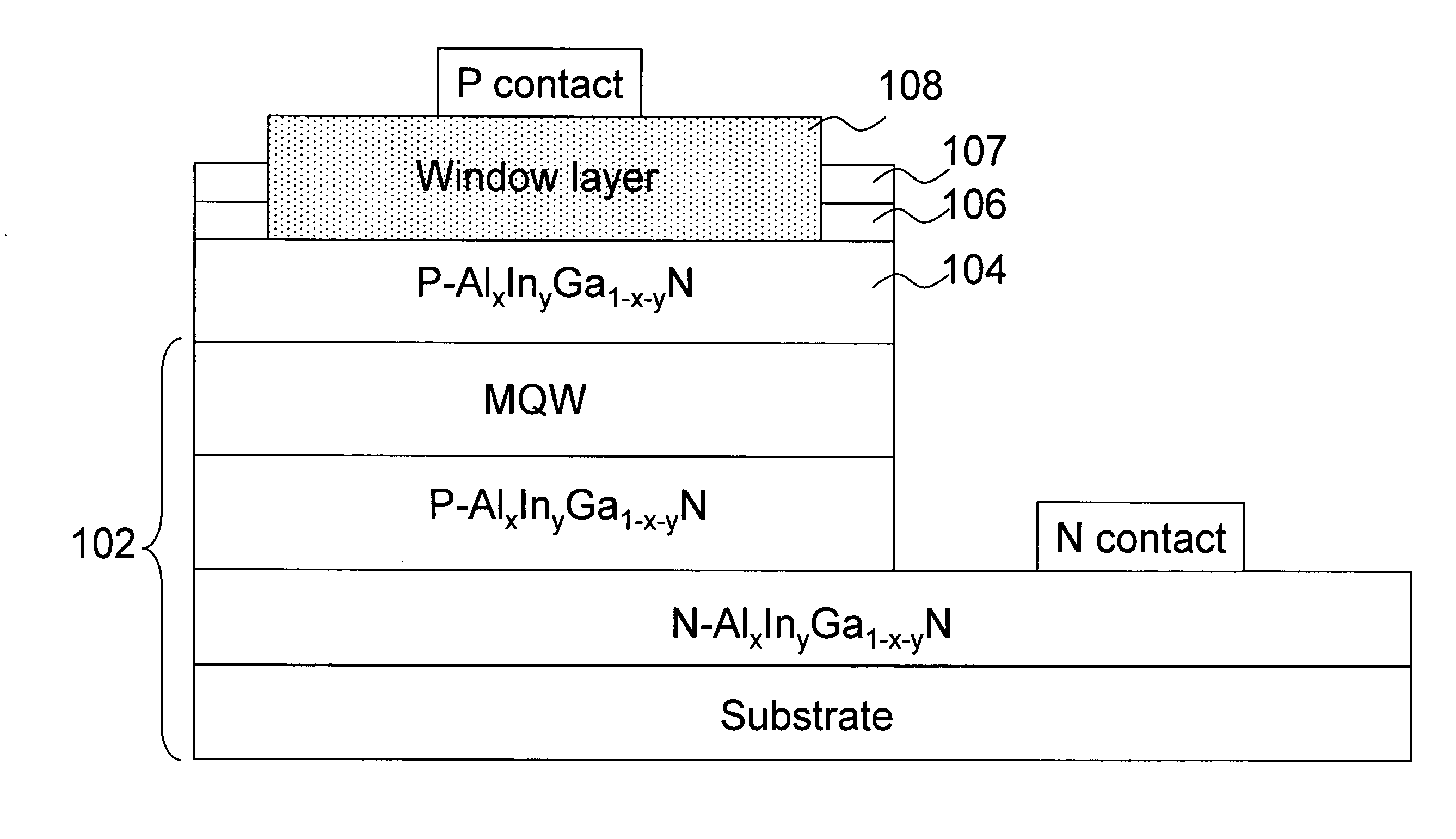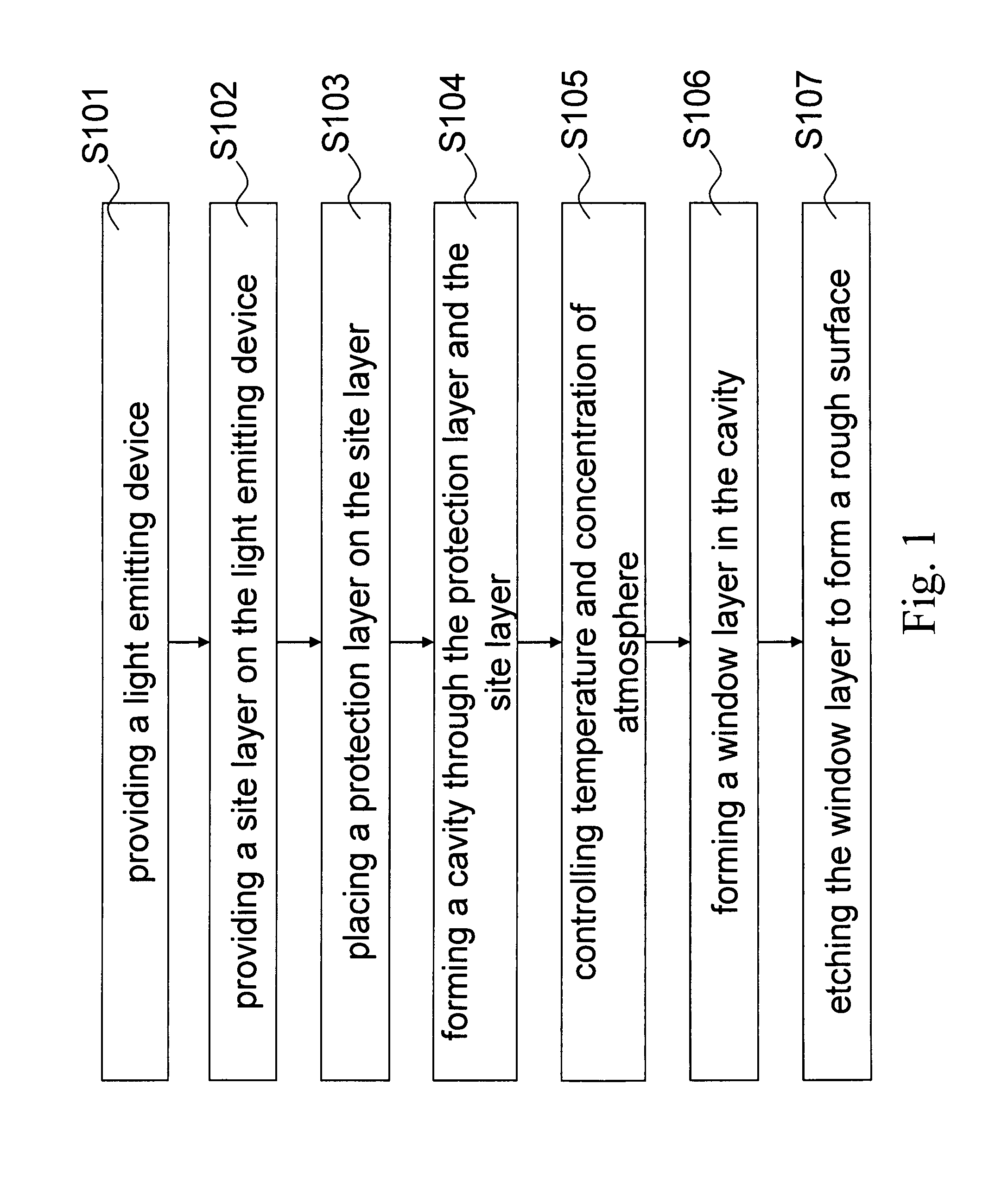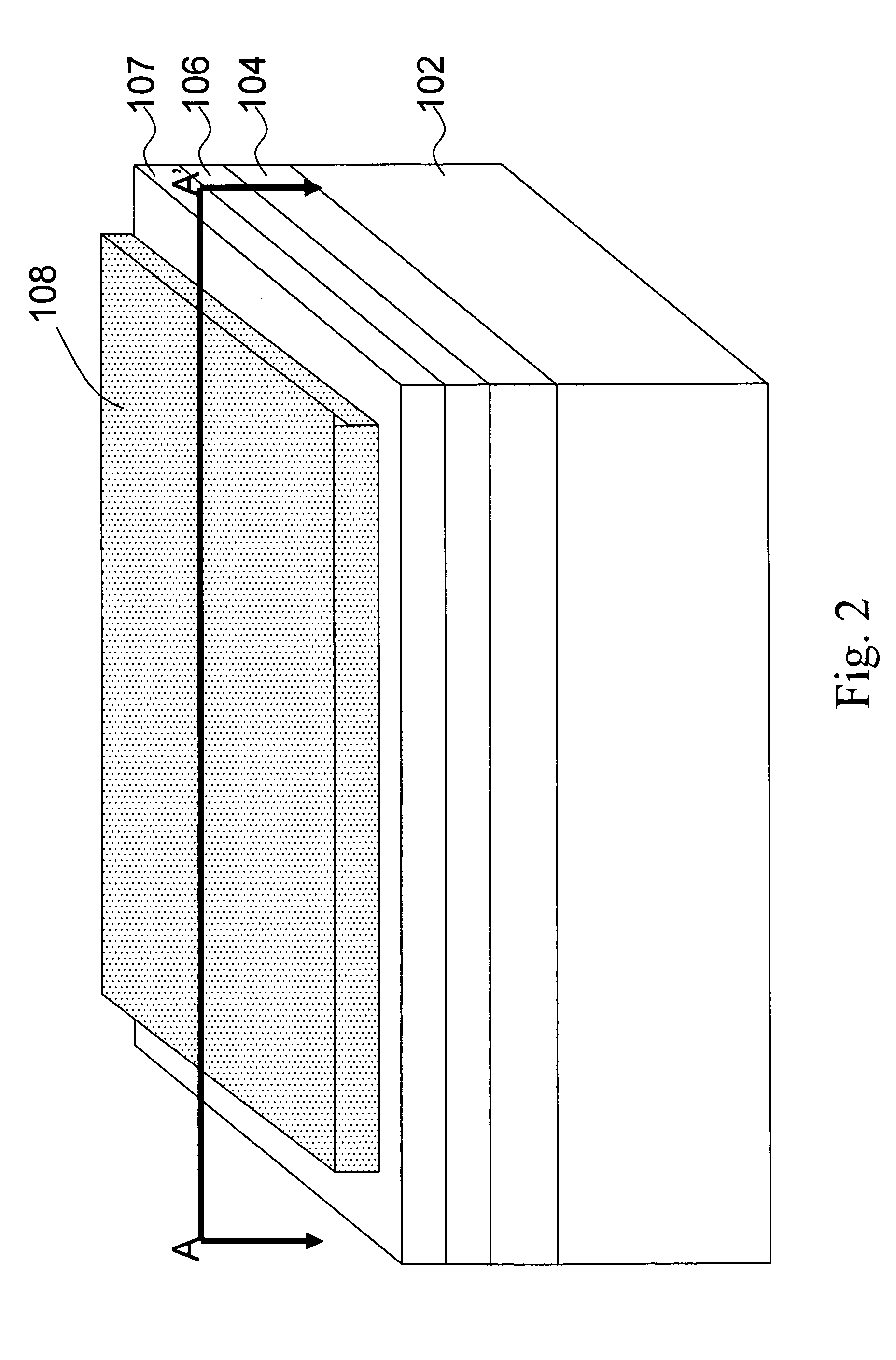Method for enhancing electrical injection efficiency and light extraction efficiency of light-emitting devices
a technology of light-emitting devices and efficiency enhancement, which is applied in the direction of semiconductor/solid-state device manufacturing, semiconductor devices, electrical equipment, etc., can solve the problems of current crowding phenomenon, serious total internal reflection and re-absorption phenomena of gan-based light-emitting devices, and low light extraction efficiency of gallium nitride light-emitting devices. achieve the effect of enhancing the efficiency of electrical injection and light extraction efficiency of a light-
- Summary
- Abstract
- Description
- Claims
- Application Information
AI Technical Summary
Benefits of technology
Problems solved by technology
Method used
Image
Examples
Embodiment Construction
[0041]The present invention will now be described more specifically with reference to the following embodiment. It is to be noted that the following descriptions of preferred embodiment of this invention are presented herein for purpose of illustration and description only; it is not intended to be exhaustive or to be limited to the precise form disclosed.
[0042]FIG. 1 is a flow chart of a preferred embodiment according to the present invention showing a method for enhancing electrical injection efficiency and light extraction efficiency of a light-emitting device by forming a window layer with a controllable light escape angle on a light-emitting device. FIG. 2 is a three dimensional view of the present invention. It also shows the relative position for each element in the present invention. Now, please refer to FIGS. 1 and 2. The method of the present invention for enhancing electrical injection efficiency and light extraction efficiency of a light-emitting device by forming a wind...
PUM
| Property | Measurement | Unit |
|---|---|---|
| thickness | aaaaa | aaaaa |
| reactive temperature | aaaaa | aaaaa |
| thick | aaaaa | aaaaa |
Abstract
Description
Claims
Application Information
 Login to View More
Login to View More - R&D
- Intellectual Property
- Life Sciences
- Materials
- Tech Scout
- Unparalleled Data Quality
- Higher Quality Content
- 60% Fewer Hallucinations
Browse by: Latest US Patents, China's latest patents, Technical Efficacy Thesaurus, Application Domain, Technology Topic, Popular Technical Reports.
© 2025 PatSnap. All rights reserved.Legal|Privacy policy|Modern Slavery Act Transparency Statement|Sitemap|About US| Contact US: help@patsnap.com



